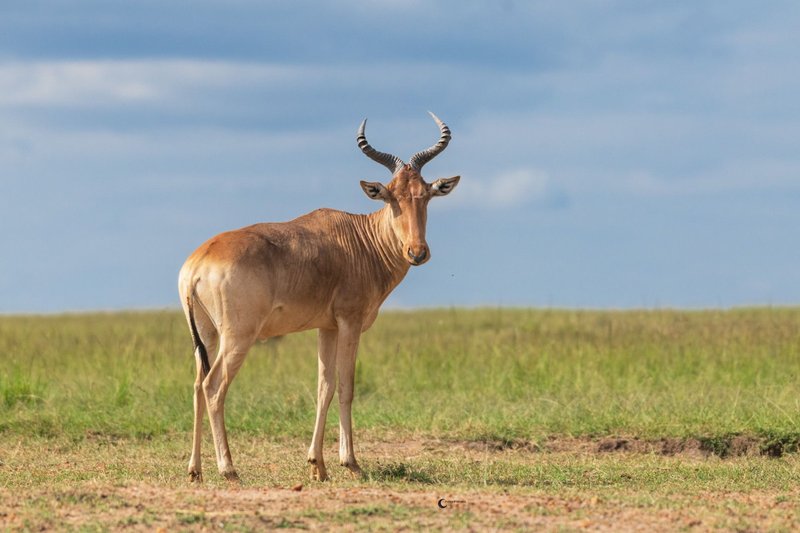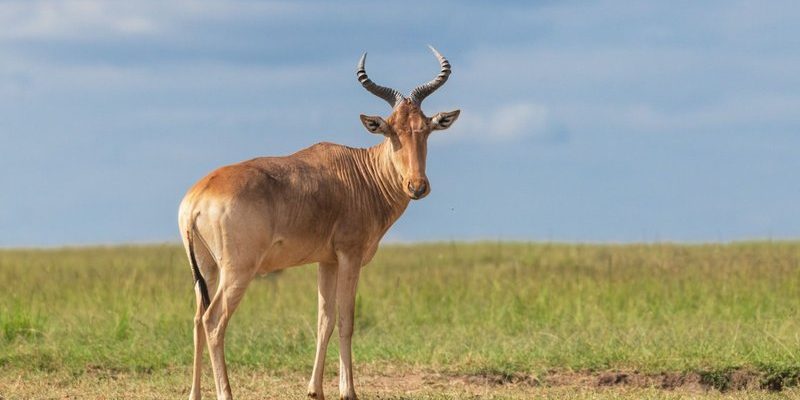
First, it’s essential to understand these creatures. Hartbeests are generally peaceful, grazing on grasslands and savannas. However, like any wild animal, they can become defensive if they feel threatened. The more informed you are about their behavior, the better prepared you’ll be if you encounter one. So, grab a cup of coffee, and let’s dive into the steps you should take when you find yourself face-to-face with a hartebeest.
Understanding Hartbeests
Before you jump into action, it’s good to know a bit about hartebeests. These antelopes are typically found across central and southern Africa. They have a unique appearance, boasting long, slender bodies and elongated faces. The two main species are the brindled and white-tailed hartebeests, each sporting different color patterns and size differences.
What makes these animals particularly interesting is their behavior. Hartbeests are social; they often graze in small herds. This social structure helps them stay safe from predators, as they can watch out for one another. They rely heavily on sight and hearing, so if they catch wind of you, they might be quick to move. Knowing this can help you better understand their actions and reactions when you encounter them.
So, what happens if you’re lucky (or unlucky) enough to encounter one? Let’s break down your options.
Stay Calm and Assess the Situation
When you spot a hartebeest, your first instinct might be to react quickly, but staying calm is vital. Panic can lead to hasty decisions. Instead, take a moment to observe the animal and your surroundings. Is the hartebeest alone or with others? Is it grazing peacefully, or does it appear alert and on edge?
If the hartebeest seems relaxed, you can enjoy the sight from a distance. However, if it shows signs of distress, like turning its head sharply or stomping its feet, that’s your cue to retreat. Remember, even though these animals are typically non-aggressive, feeling cornered could trigger a defensive response.
Here are a few tips on how to assess the situation:
- Observe: Watch the animal’s body language.
- Distance: Maintain a safe distance (at least 100 yards is ideal).
- Environment: Be aware of your surroundings and possible escape routes.
Keep Your Distance
Personal space is crucial when it comes to wildlife. Hartbeests can be curious, but they don’t always react favorably to human presence. Keeping a safe distance allows you to enjoy watching them without causing them stress.
Use binoculars if you want a closer look without intruding on their space. If you’re in a vehicle, keep your windows up and avoid making sudden movements. Animals often respond to abrupt actions, and it can provoke unnecessary fear or aggression.
Here’s what to remember:
- Distance: Always remain at least 100 yards away.
- Quiet: Keep noise levels down to avoid startling the animal.
- Do not feed: Feeding wildlife can alter their natural behaviors.
Know When to Move On
Sometimes, the best decision is to simply walk away. If a hartebeest seems agitated or is staring directly at you, it’s best to move back slowly. Sudden movements can trigger a chase or a defensive action.
You might be wondering, “How do I know when to leave?” Here are a few signals to pay attention to:
- Body Language: A hartebeest with ears pinned back or puffed-up hair is signaling discomfort.
- Screams: If you hear loud calls or angry snorts, it’s definitely time to back off.
- Group Movement: If a group of hartebeests starts shifting or running, follow their lead and exit the area quietly.
What If They Charge?
While hartebeests are generally not aggressive, there’s always a chance they might feel threatened and charge. If this happens, your instincts will be key. Here’s what you should do:
1. Stand Still: Moving can trigger their chase instinct.
2. Use a Barrier: If you’re near a vehicle or tree, get behind it if you can.
3. Look for an Escape Route: If the situation escalates, be ready to calmly retreat at an angle, not directly away, which could provoke a chase.
It’s important to remind yourself that these animals usually prefer to avoid confrontation. A charge often means they’re scared, not angry. The last thing they want is to engage with a perceived threat.
Educate Yourself Beforehand
One of the best preparations for wildlife encounters is education. Understand the behavior of hartebeests and other wildlife in the area. Knowledge equips you with the tools to react calmly and effectively when you meet them.
Consider joining guided tours or wildlife workshops. Not only will you gain valuable insights, but you’ll also learn from experienced guides who know how to deal with situations like this.
Here’s how you can prepare:
- Books/Guides: Read up on African wildlife.
- Apps: Use wildlife identification apps to familiarize yourself with species.
- Safaris: Go on guided safaris for real-time learning experiences.
Respecting Wildlife and Their Habitat
Above all, remember that we are visitors in their home. Respecting wildlife and their habitats is essential for both their safety and ours. Following ethical practices, like keeping your distance and avoiding disturbances, helps ensure these magnificent animals can thrive for future generations.
As you engage with wildlife in any setting, think about how you can contribute to their conservation. The more we respect these creatures and their environments, the better off we all are.
In summary, encountering a hartebeest can be a thrilling experience, but knowing how to act is key. Keep your distance, observe their behavior, and remember: your calm presence is more beneficial than you might realize.
Whether you’re planning a safari or just curious about wildlife, being informed will only enhance your appreciation for these remarkable antelopes. So next time you find yourself in the wild, you’ll be ready to navigate the situation with confidence and respect.

